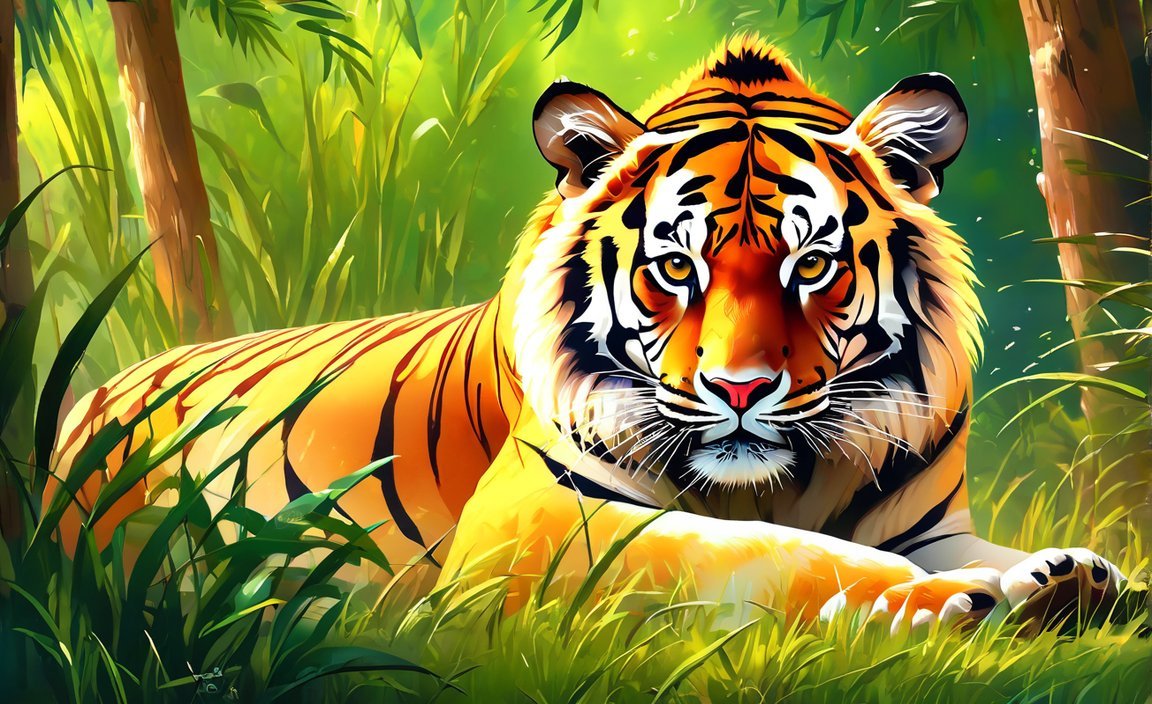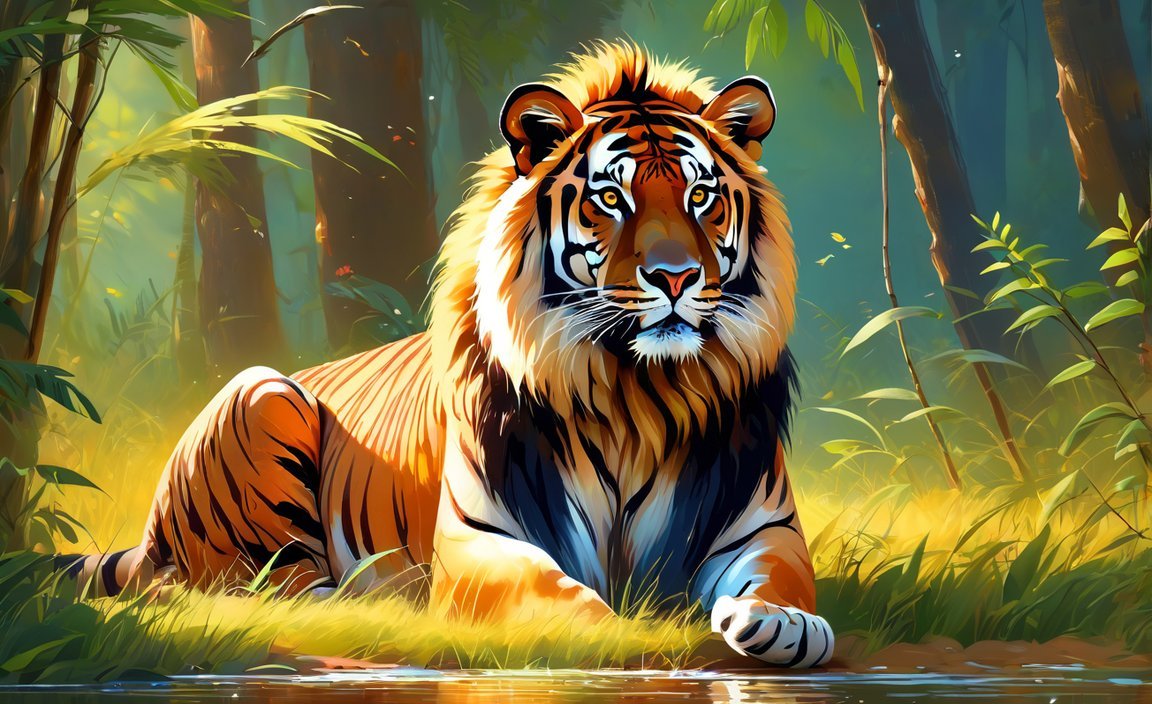India’s Endangered Wildlife: 10 Species at Risk highlights the urgent need for conservation efforts to protect and preserve the incredible biodiversity found in India. This article delves into the ten wildlife species that face severe threats to their survival due to habitat loss, poaching, and other human activities. By showcasing the challenges these species encounter and proposing effective strategies for their protection, this article aims to raise awareness and inspire action to secure a brighter future for India’s unique and endangered wildlife.
Key Takeaways:
- Bengal tigers make up half of the world’s tiger population, with 70% residing in India. They are critically endangered.
- The Asiatic lion, once widespread in Asia, is now only found in the Gir Forest of Gujarat, India. It is listed as endangered.
- Snow leopards inhabit the mountain ranges of India, including the Himalayas. They are highly endangered due to habitat loss and poaching.
- The one-horned rhinoceros is native to the Indian subcontinent and is mainly found in the Kaziranga National Park in India. It is listed as vulnerable.
- The blackbuck is a species of antelope found in India. It is classified as endangered due to habitat loss and poaching.
- The lion-tailed macaque is a rare primate species found in the Western Ghats of India. It is critically endangered due to habitat loss.
- The resplendent tree frog is a vibrant species of frog found in the Western Ghats of India. It is endangered due to habitat destruction.
- The Kashmiri red stag, also known as the hangul, is a deer species found in the forests of Kashmir. It is critically endangered due to habitat loss and poaching.
- The Indian wild ass, also known as the ghudkhur, is found in the Rann of Kutch in Gujarat, India. It is listed as endangered.
- The red panda, native to the Himalayas, is listed as endangered due to habitat loss and illegal wildlife trade.
(Note: This list is not exhaustive, and other endangered species may also exist in India.)
10 Endangered Wildlife Species of India

India is home to a rich diversity of wildlife, with many species facing the threat of extinction. In this article, we will explore 10 endangered wildlife species of India and shed light on the challenges they face, as well as propose strategies for their protection.
1. Bengal Tiger
The majestic Bengal tiger is one of the most iconic species in India. With 70% of the world’s tiger population residing in India, it is disheartening to know that they are critically endangered. Habitat loss, poaching, and human-wildlife conflict pose significant threats to their survival.
2. Asiatic Lion
Once widespread in Asia, the Asiatic lion is now confined to the Gir Forest of Gujarat, India. This magnificent species is listed as endangered due to habitat fragmentation and poaching. Conservation efforts have been successful in protecting their habitat, but more work needs to be done to ensure their long-term survival.
3. Snow Leopard
In the mountain ranges of India, including the Himalayas, the elusive snow leopard roams. These beautiful creatures are highly endangered due to habitat loss and illegal poaching for their fur and body parts. Protecting their fragile mountain habitats and implementing stricter anti-poaching measures are crucial for their survival.
4. One-horned Rhinoceros
The one-horned rhinoceros, native to the Indian subcontinent, is mainly found in the Kaziranga National Park in India. Although listed as vulnerable, habitat destruction and poaching are major threats to its population. Strict law enforcement and habitat restoration efforts are essential to save this magnificent species.
5. Blackbuck
The blackbuck, a species of antelope, once thrived across India but is now classified as endangered. Both habitat loss and poaching have contributed to their decline. Conservation measures such as protected areas and community involvement can aid in their preservation.
6. Lion-tailed Macaque
The lion-tailed macaque is a rare primate species found in the Western Ghats of India. Their population is critically endangered due to habitat loss caused by deforestation. Initiatives that focus on preserving their forest habitats and raising awareness about their conservation are necessary for their survival.
7. Resplendent Tree Frog
Endemic to the Western Ghats of India, the resplendent tree frog is a vibrant species threatened by habitat destruction. As their habitats are increasingly fragmented, urgent action is needed to protect these stunning amphibians and their delicate ecosystems.
8. Kashmiri Red Stag
Found in the forests of Kashmir, the Kashmiri red stag, also known as the hangul, is critically endangered. Habitat loss and poaching have taken a toll on their population. Efforts such as habitat restoration and anti-poaching measures are vital to preserve this majestic deer.
9. Indian Wild Ass
The Indian wild ass, known as the ghudkhur, inhabits the Rann of Kutch in Gujarat, India. Listed as endangered, this unique species faces threats such as habitat degradation and illegal hunting. Conservation initiatives that focus on sustainable land management and protection against hunting are crucial to their survival.
10. Red Panda
The enchanting red panda, native to the Himalayas, is listed as endangered. Their habitat is rapidly diminishing due to deforestation and illegal wildlife trade. Conserving their forest homes and cracking down on the illegal wildlife trade are essential for their survival.
These ten endangered wildlife species of India represent the urgent need for conservation efforts. By raising awareness, supporting conservation initiatives, and advocating for stricter protection measures, we can secure a brighter future for India’s precious wildlife. Let us come together to ensure their survival and create a world where these magnificent creatures thrive.
Here is a list of 10 endangered birds in India that you need to know about. Explore more about these majestic creatures and learn how we can protect them: 10 endangered birds in India.
If you are curious about the endangered species in India, here is a comprehensive list of 10 endangered species that require our immediate attention: 10 endangered species in India.
Discover the unique and diverse wildlife of Pakistan by discovering our list of 10 endangered species in the country: 10 endangered species in Pakistan.
India’s wildlife faces many challenges, and to maintain a balance in our ecosystem, we must protect endangered animals. Learn more about the 10 endangered species of animals in India: 10 endangered species of animals in India.
Overview of the Indian Rhinoceros and its Conservation Efforts

The Indian Rhinoceros, also known as the Greater One-Horned Rhinoceros, is an iconic species native to the Indian subcontinent. These magnificent creatures play a vital role in the biodiversity of the region, but unfortunately, their survival is at risk. In this article, we will explore an overview of the Indian Rhinoceros and the important conservation efforts being undertaken to protect them.
The Indian Rhinoceros is primarily found in the Indian state of Assam, with over 90% of the population residing in the Kaziranga National Park. These rhinos have faced significant threats over the years, with intensive hunting leading to a sharp decline in their population. By 1908, the number of Indian Rhinoceros in Kaziranga National Park had plummeted to a mere 12 individuals.
However, thanks to dedicated conservation efforts, the population of the Indian Rhinoceros has been steadily increasing. Currently, there are around 4,000 individuals distributed across northeastern India and the Terai grasslands of Nepal. The efforts of organizations like the World Wildlife Fund (WWF) have been crucial in this success story.
The WWF is actively involved in the conservation of Indian Rhinoceros and has set an ambitious target of creating three new populations of at least 10 rhinos each within the next five years. This initiative aims to further boost the population and ensure the long-term survival of this magnificent species.
Conservation efforts for Indian Rhinoceros not only focus on increasing their numbers but also aim to restore their habitats and protect them from poaching. These initiatives involve collaboration with local communities, who play a vital role in ensuring the success of such conservation programs.
The classification of Indian Rhinos by the International Union for Conservation of Nature (IUCN) has evolved over the years. In 1996, they were classified as endangered, indicating the critical state of their population. However, their status was changed to vulnerable in 2008, reflecting the positive impact of conservation measures.
Key Takeaways:
- The Indian Rhinoceros, also known as the Greater One-Horned Rhinoceros, is an endangered species native to the Indian subcontinent.
- Conservation efforts have led to a significant increase in the Indian Rhinoceros population, with around 4,000 individuals distributed across northeastern India and the Terai grasslands of Nepal.
- The World Wildlife Fund (WWF) is actively involved in Indian Rhinoceros conservation, aiming to create three new populations of at least 10 rhinos each within the next five years.
- Conservation initiatives for Indian Rhinoceros focus on habitat restoration, anti-poaching measures, community involvement, and raising awareness about their importance.
Sources:
– World Wildlife Fund: Greater One-Horned Rhino
– Britannica: Indian Rhinoceros Description, Population, & Facts
Discussion of the Gangetic Dolphin and its Habitat Threats
The Gangetic dolphin, also known as the Ganges river dolphin, is an endangered species facing numerous threats in its densely populated range. In this article, we will delve into the main reasons why Gangetic dolphins are endangered and explore potential solutions to protect and conserve this unique species.
Climate Change
Climate change has had a significant impact on Gangetic dolphins, leading to an increase in saltwater intrusion into their freshwater habitats. This intrusion is caused by rising sea levels and altered river flows, resulting in unfavorable conditions for the dolphins’ survival and reproduction[^1].
Pollution
Due to their proximity to human activities, Gangetic dolphins are highly susceptible to pollution from sewage and industrial wastewater. The contamination of their river ecosystems poses serious health risks to these dolphins. The discharge of pollutants into their habitats can affect their immune systems, reproductive capabilities, and overall survival[^2].
Fishery Bycatch
While deliberate hunting of Gangetic dolphins has decreased since the implementation of the Indian Wildlife Protection Act, they still face significant threats from fishery bycatch. Dolphins often get entangled in fishing nets meant for other species, leading to accidental drowning. This unintentional capture remains a major concern and contributes to the decline of Gangetic dolphin populations[^3].
Dams and Barrages
The construction of dams and low-gate barrages compounds the challenges faced by Gangetic dolphins. These structures disrupt the dolphins’ natural movement patterns, isolating them into smaller subpopulations with limited genetic diversity. For instance, the Farakka Barrage severely restricts dolphin movement and disrupts their habitat connectivity[^4].
To tackle the threats facing Gangetic dolphins, immediate conservation action is crucial. Here are some potential solutions:
- Implement strict regulations and monitoring systems to control pollution from human activities that contaminate the dolphins’ habitats.
- Raise awareness among local communities about the importance of protecting Gangetic dolphins and promote sustainable fishing practices that minimize the risk of bycatch.
- Alleviate the impacts of dams and barrages by considering alternative solutions that prioritize the preservation of the dolphins’ habitats and connectivity.
By addressing these key issues and working towards their conservation, we can help safeguard the future of the endangered Gangetic dolphins and ensure the long-term survival of this unique species.
Sources:
[^1]: Ganges River Dolphin: An Overview of Biology, Ecology, and Conservation – ResearchGate
[^2]: Why Ganges River Dolphins Are Endangered and What We Can Do – Treehugger
[^3]: Conservation threats of the Gangetic Dolphin – Springer
[^4]: Ganges River Dolphin | WWF India – WWF India
Key Takeaways:
- Climate change has caused an increase in saltwater intrusion into Gangetic dolphins’ freshwater habitats, affecting their survival and reproduction.
- Pollution from sewage and industrial wastewater poses significant health risks to Gangetic dolphins and their river ecosystems.
- Fishery bycatch remains a major threat to Gangetic dolphins, as they get unintentionally trapped in fishing nets.
- Dams and barrages disrupt the dolphins’ movement patterns and habitat connectivity, leading to smaller isolated populations.
- Solutions to protect Gangetic dolphins include implementing strict regulations, raising awareness, and considering alternative dam and barrage solutions.
Explanation of the Blackbuck Antelope and Its Conservation Challenges
The blackbuck antelope, scientifically known as Antilope cervicapra, is an endangered species native to India and Nepal. It belongs to the tribe Antilopini, which encompasses other species like gazelles, springboks, and gerenuks. These majestic creatures are known for the long horns of adult males.
Blackbucks typically have a head-to-body length of 120 cm, and their horns range from 35 to 75 cm in length. Adult males weigh between 20 to 57 kg, while females weigh between 20 to 33 kg. They are diurnal ungulates and display distinct sexual dimorphism.
In India, the hunting of blackbucks is strictly prohibited under Schedule I of the Wildlife Protection Act of 1972. This antelope holds significant cultural and religious value in Hinduism, resulting in villagers in India and Nepal protecting and not harming the species. Unfortunately, blackbucks have become extinct in Pakistan and Bangladesh, with only scattered herds remaining in protected areas in India and Nepal.
Conservation efforts have been undertaken to protect the blackbuck population. Notably, blackbucks in Nepal have shown signs of recovery from being extinct, with populations ranging from 9 to 234 in Khairapur (Krishnasaar Conservation Area) and 28 to 115 in Hirapur Phanta (Shuklaphanta National Park) as of September 2020.
To ensure the survival of this important species, conservation initiatives such as habitat restoration and protection, anti-poaching measures, community involvement, and increased awareness are crucial.
Key Takeaways:
– The blackbuck antelope, Antilope cervicapra, is an endangered species found in India and Nepal.
– Hunting of blackbucks is prohibited in India under the Wildlife Protection Act of 1972.
– Blackbucks have become extinct in Pakistan and Bangladesh, with only scattered herds remaining in protected areas in India and Nepal.
– Conservation efforts in Nepal have resulted in population recoveries for blackbucks.
– Initiatives such as habitat restoration, anti-poaching measures, community involvement, and awareness are essential for blackbuck conservation.
Sources:
– Britannica: Blackbuck
– BYJU’S: Blackbuck Indian Antelope
FAQ
Q1: What are the main endangered wildlife species in India?
A1: Some of the main endangered wildlife species in India include the Bengal Tiger, Asiatic Lion, Snow Leopard, One-horned Rhinoceros, Blackbuck, Lion-tailed Macaque, Resplendent Tree Frog, Kashmiri Red Stag, Indian Wild Ass, and Red Panda.
Q2: Where can I find Bengal Tigers in India?
A2: Bengal Tigers can be found in various tiger reserves and national parks across India, including the Sundarbans National Park, Bandipur National Park, and Jim Corbett National Park.
Q3: Why are Snow Leopards endangered in India?
A3: Snow Leopards are endangered in India primarily due to habitat loss and poaching. Their mountainous habitats in the Himalayas are being encroached upon by human activities, and they are also hunted for their fur and body parts.
Q4: What conservation efforts are being made for the One-horned Rhinoceros in India?
A4: Conservation efforts for the One-horned Rhinoceros in India include habitat restoration, anti-poaching measures, and wildlife conservation programs. There are also plans to create new populations of rhinos in different regions to increase their numbers.
Q5: How can we help protect endangered wildlife species in India?
A5: There are several ways to help protect endangered wildlife species in India, including supporting conservation organizations, spreading awareness about the importance of conservation, and advocating for stricter laws and regulations against poaching and habitat destruction.
- Unveiling the Enigma: Mansoureh Khojasteh Bagherzadeh’s Public Appearances & Private Life in Iran - July 18, 2025
- Unveiling the Mystery: Mansoureh Khojasteh Bagherzadeh’s Husband: A Rare Glimpse into a Private Life - July 18, 2025
- Unveiling Masoud Khamenei’s Mother: Power, Influence, and Iran’s Future - July 18, 2025
















